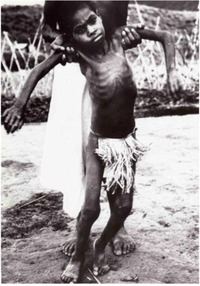
Photo from wikipedia
To reveal the effects of PrPC on cells’ biological processes and on gene expression. We established stable DF‐1 (PrPC‐knockdown (KD)) cells, and combined with DF‐1 (wt) and DF‐1 (PrPC‐overexpression (OE))… Click to show full abstract
To reveal the effects of PrPC on cells’ biological processes and on gene expression. We established stable DF‐1 (PrPC‐knockdown (KD)) cells, and combined with DF‐1 (wt) and DF‐1 (PrPC‐overexpression (OE)) cells that we previously established we studied the effects of chicken PrPC (PrPC) on DF‐1 cells’ processes. Then by using high throughput sequencing technology (HTS) and bioinformatics, we analyzed the differentially expressed genes (DEGs) between these cells. The results show that compared with DF‐1 (wt) and DF‐1 (PrPC‐scramble), DF‐1 (PrPC–KD) are significantly decreased in adhesion, proliferation, formation rate of colony and cells number of colony, scratch wound healing rate, cells number of invasion and migration, S phase cell populations, but the apoptosis rate and G1 phase cell populations are significantly increased. Conversely, all of these features in DF‐1 (PrPC‐OE) are opposite. In addition, compared with DF‐1 (wt), we found that there are totally 1055 DE genes between DF‐1 (PrPC–KD) and DF‐1 (PrPC‐OE) cells. After Go and pathway enrichment analysis, we know that these DEGs are significantly enriched in cell, cell part, cellular process, and metabolic pathway. In short, we found that PrPC can promote DF‐1 cells’ processes except apoptosis. Furthermore, PrPC involves in the focal adhesion, cancer, ribosome, metabolic pathways, and so forth, and the overexpression of PrPC can promote the pathway of amoebiasis, but its down‐regulation can promote the pathway of serotonergic synapse. However, the details are keeping unknown and that would be our next research.
Journal Title: Journal of Cellular Physiology
Year Published: 2018
Link to full text (if available)
Share on Social Media: Sign Up to like & get
recommendations!